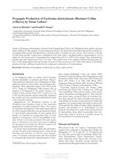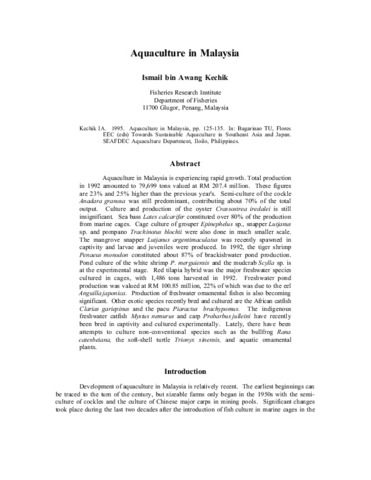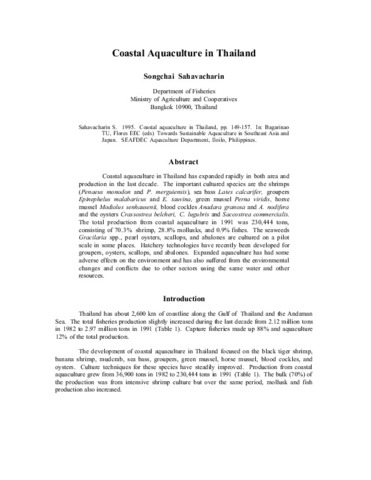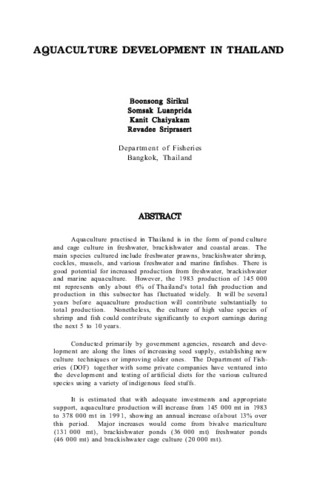Propagule production of Eucheuma denticulatum (Burman) Collins et Harvey by tissue culture.

Quan điểm/
Ngày
2003Page views
520metadata
Hiển thị bản ghi đầy đủ mặt hàngCited times in Scopus
Share
trừu tượng
Plants of Eucheuma denticulatum collected from Danajon Reef, Bohol, the Philippines were used to produce tissue cultures for the purpose of generating new strains. The plants were sectioned and grown in media encouraging callus growth. New shoots were produced after 3 months of in vitro culture. After another 3 months of laboratory growth, 5 plants were outplanted in the field. After 4 months growth at approximately 0.50 m depth, the five plants grew to biomasses that ranged from 354.9 to 1055.9 g wet weight. They demonstrated growth rates that ranged from 5.8 to 7.2% day−1. The growth rates of the plants produced through tissue culture in this study suggest that such plants can grow at rates as good as, if not better than, those of 'seedlings' produced by the traditional method in the commercial cultivation of E. denticulatum.
Suggested Citation
Hurtado, A. Q., & Cheney, D. P. (2003). Propagule production of Eucheuma denticulatum (Burman) Collins et Harvey by tissue culture. Botanica Marina , 46(4), 338-341. https://doi.org/10.1515/BOT.2003.031
Chủ thể
Bộ sưu tập
- AQD Journal Articles [1249]
Related items
Showing items related by title, author, creator and subject.
-
Aquaculture in Malaysia
Kechik, Ismail bin Awang. (Aquaculture Department, Southeast Asian Fisheries Development Center, 1995)Aquaculture in Malaysia is experiencing rapid growth. Total production in 1992 amounted to 79,699 tons valued at RM 207.4 million. These figures are 23% and 25% higher than the previous year's. Semi-culture of the cockle ... -
Coastal aquaculture in Thailand
Sahavacharin, Songchai (Aquaculture Department, Southeast Asian Fisheries Development Center, 1995)Coastal aquaculture in Thailand has expanded rapidly in both area and production in the last decade. The important cultured species are the shrimps (Penaeus monodon and P. merguiensis), sea bass Lates calcarifer, groupers ... -
Aquaculture development in Thailand
Sirikul, Boonsong; Luanprida, Somsak; Chaiyakam, Kanit; Sriprasert, Revadee (Aquaculture Department, Southeast Asian Fisheries Development Center, 1988)Aquaculture practised in Thailand is in the form of pond culture and cage culture in freshwater, brackishwater and coastal areas. The main species cultured include freshwater prawns, brackishwater shrimp, cockles, mussels, ...



